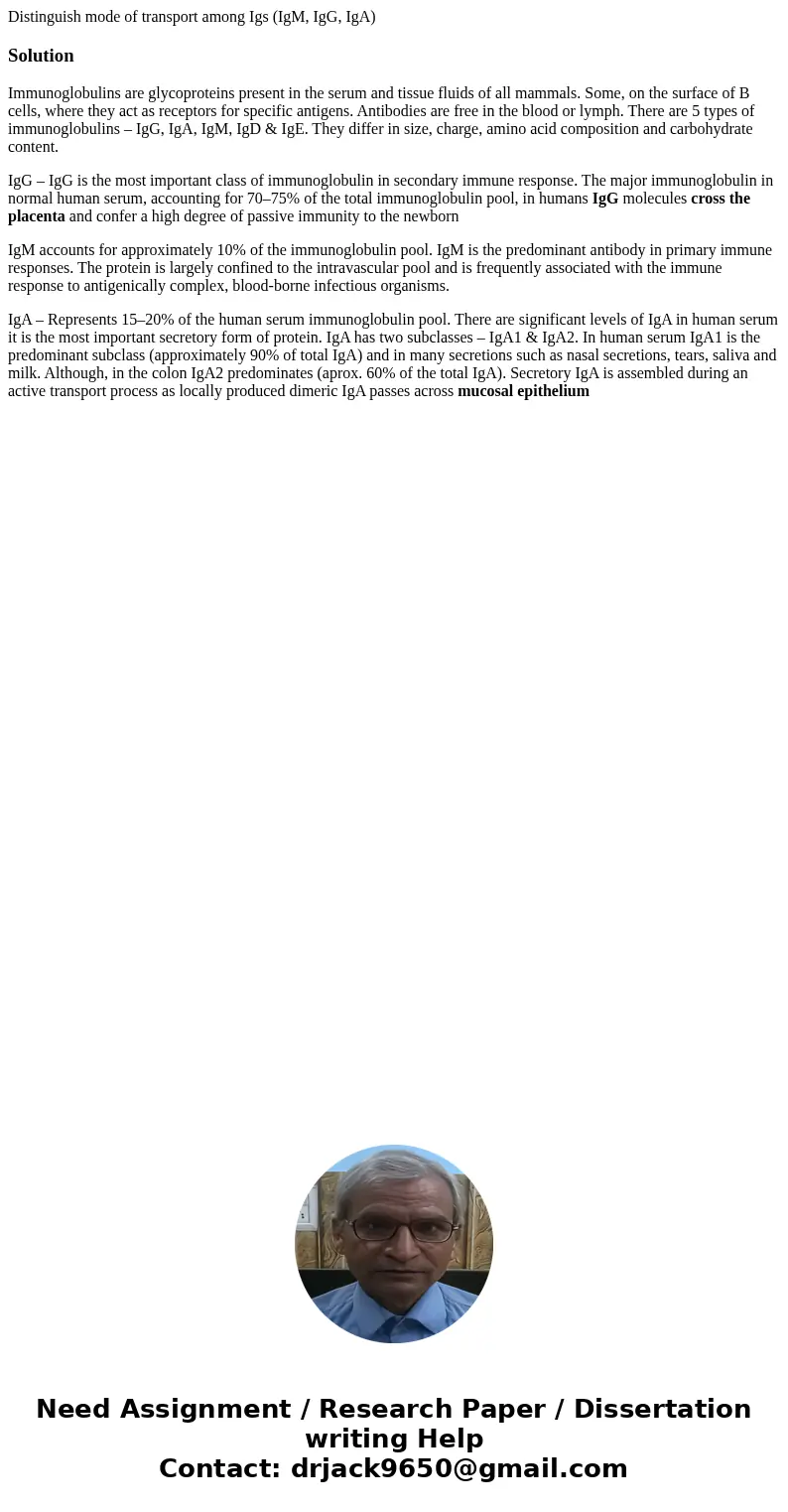Distinguish mode of transport among Igs IgM IgG IgASolutionI
Distinguish mode of transport among Igs (IgM, IgG, IgA)
Solution
Immunoglobulins are glycoproteins present in the serum and tissue fluids of all mammals. Some, on the surface of B cells, where they act as receptors for specific antigens. Antibodies are free in the blood or lymph. There are 5 types of immunoglobulins – IgG, IgA, IgM, IgD & IgE. They differ in size, charge, amino acid composition and carbohydrate content.
IgG – IgG is the most important class of immunoglobulin in secondary immune response. The major immunoglobulin in normal human serum, accounting for 70–75% of the total immunoglobulin pool, in humans IgG molecules cross the placenta and confer a high degree of passive immunity to the newborn
IgM accounts for approximately 10% of the immunoglobulin pool. IgM is the predominant antibody in primary immune responses. The protein is largely confined to the intravascular pool and is frequently associated with the immune response to antigenically complex, blood-borne infectious organisms.
IgA – Represents 15–20% of the human serum immunoglobulin pool. There are significant levels of IgA in human serum it is the most important secretory form of protein. IgA has two subclasses – IgA1 & IgA2. In human serum IgA1 is the predominant subclass (approximately 90% of total IgA) and in many secretions such as nasal secretions, tears, saliva and milk. Although, in the colon IgA2 predominates (aprox. 60% of the total IgA). Secretory IgA is assembled during an active transport process as locally produced dimeric IgA passes across mucosal epithelium

 Homework Sourse
Homework Sourse